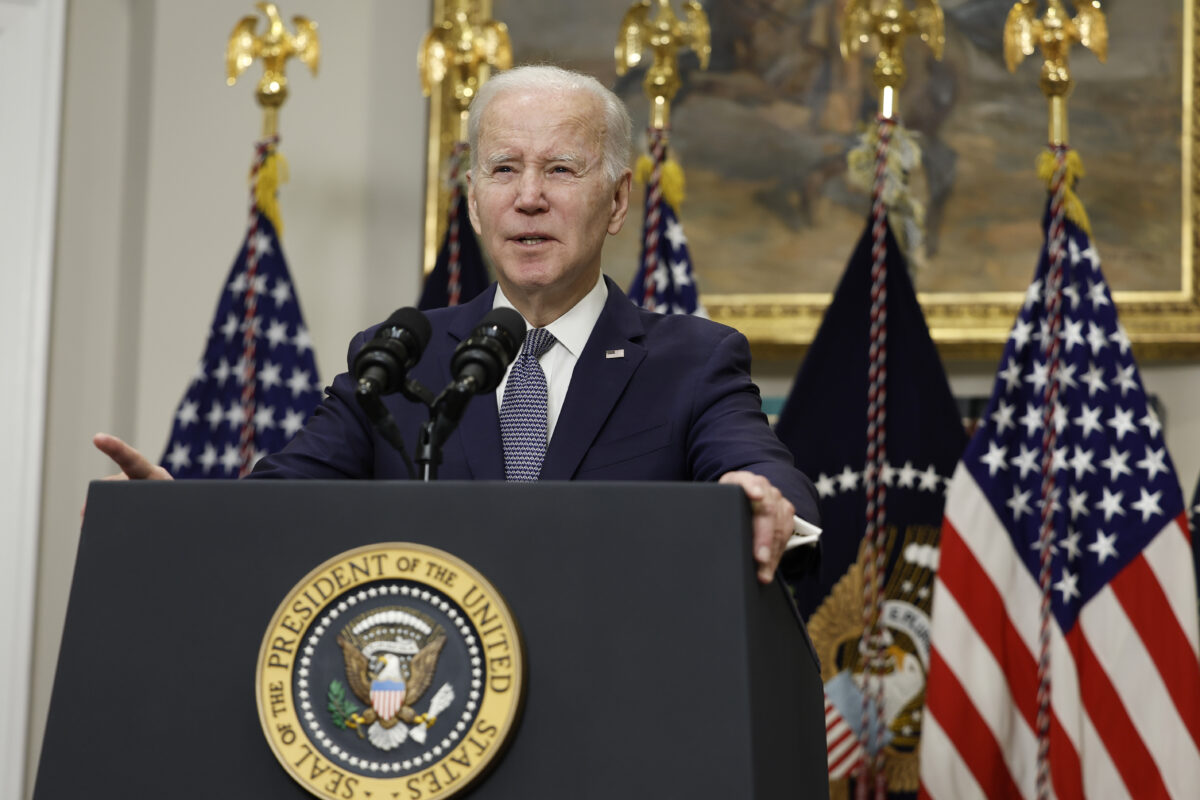


Commentary
The collapse of Silicon Valley Bank (SVB) occurred just days after Congress passed the Braun-Barr resolution, which overturns the Biden administration’s “Prudence and Loyalty” rule and its encouragement of environmental, social, and governance (ESG) investing by pension managers under the Employee Retirement Income Security Act (ERISA). The timing could hardly be more instructive. The Prudence and Loyalty rule, the White House had recently argued in its defense, “reflects what successful marketplace investors already know—there is an extensive body of evidence that environmental, social, and governance factors can have material impacts on certain markets, industries, and companies.”
How true. SVB’s bankruptcy shows that focusing on ESG factors can indeed be material to investment performance, but not in the way that the Biden administration believes.
SVB reeked of ESG. “SVB’s Executive Committee, chaired by CEO Greg Becker, is responsible for oversight of our ESG program and providing insight on ESG risks and opportunities related to SVB’s business,” the bank’s ESG governance program states. Chief marketing and strategy officer Michelle Draper was responsible for ensuring that ESG was integrated into SVB’s business strategy, indicating that ESG was more about window-dressing for clients than anything to do with the robustness of the bank’s business model.
The now-failed bank checked all the ESG boxes. Forty-five percent of its board directors were women. Its Community Reinvestment Act plan was accorded an outstanding accolade. Nine pages of its ESG report are taken up with its World Economic Forum (WEF) Stakeholder Capitalism Metrics. On the WEF dignity and equality metric, SVB responded that the bank “benefits from a diverse workforce and aims to continue to increase diverse representation at all levels of the company.” It boasts of more than halving its greenhouse gas emissions. “SVB recognizes the significant societal, ecological and economic threats of climate change,” its 2021 climate-related disclosure report said.
Sensitivity about the purported economic threat posed by climate change seems to have been inversely correlated with awareness of the changing financial climate caused by inflation and rising interest rates and the havoc that might wreak on its balance sheet and liquidity. “Everyone, except SVB management it seems, knew interest rates were heading up,” observed the Wall Street Journal’s Andy Kessler. “Federal Reserve Chairman Jerome Powell has been shouting this from the mountain tops.” Astonishingly, SVB had been operating without a chief risk officer for its last nine months before it went under. According to a report in the International Business Times, the head of financial risk management for SVB’s UK division introduced initiatives including the organization’s first month-long Pride campaign and a blog emphasizing mental-health awareness for LGBTQ youth.
ESG has a precursor from decades earlier: CSR, which stood for corporate social responsibility. While engaged in a massive business fraud, Enron was giving millions of dollars to charity, topping CSR rankings, and scooping up prestigious awards, including the Council on Economic Priorities’ Corporate Conscience Award and the Environmental Protection Agency’s Climate Protection Award. What Enron and now SVB show is that distracting investors from core business drivers by throwing out bundles of virtue-signaling chaff is a strong signal that something is probably amiss—in the case of Enron, that it was fraudulently making up its financial numbers; in the case of SBV, that rising interest rates threatened its solvency and sustainability.
There is a correlation here to investment managers running other people’s money. Under ERISA, retirement savings must be invested for the exclusive purpose of providing retirement benefits. With the rise in fashion for ESG investing and its dubious claim of “doing well by doing good,” the Trump administration decided that the Labor Department needed to clarify application of the law’s intent that the sole objective of pension investing is to do well by seeking to maximize risk-adjusted returns. The result was a 2020 rule that skillfully clarified the legal duties of investment fiduciaries. Far from preventing them from considering ESG among other factors, as the Biden administration subsequently alleged, the 2020 rule doesn’t even mention ESG. Instead, it de-fanged ESG by requiring that fiduciaries consider only pecuniary factors in selecting plan investments. If a factor doesn’t make the cut as pecuniary, it should not be taken into consideration.
This, the Biden administration claimed, had a chilling effect on incorporating ESG, especially climate factors, into investment decisions—as well it should. Most of what constitutes ESG is investment chaff. This represented an obstacle to the administration’s climate-policy ambitions. In May 2021, President Biden signed an executive order to use corporate climate-risk disclosure to help achieve its aim of decarbonizing the economy by 2050. Under White House instruction, in October 2021, the Labor Department rushed out a draft rule that appeared to suggest that fiduciaries should consider climate and other ESG factors in making investment decisions. Together with other provisions, it would have driven a coach and horses through ERISA. For this reason, it stood little chance of surviving inevitable legal challenge.
The final rule, which the Braun-Barr resolution nullifies—barring a presidential veto –substantially weakens the earlier draft but inevitably retains the climate tilt, stating that investment decisions must be based on factors that fiduciaries reasonably determine are relevant to a risk-and-return analysis that “may include” the economic effects of climate change and other ESG factors. The rule makes 161 mentions of climate or climate change. Prudence and loyalty this isn’t. The rule’s aim is facilitating the use of retiree savings in progressives’ fight against climate change.
One lesson of SVB’s collapse is the critical importance for business to focus on the essential. Harnessing data on the stock performance of companies taking positions across the political spectrum—including not taking a position at all—Michael Edleson and Andy Puzder conclude that companies that focus on profits outperform companies that don’t. “As a corollary,” they add, “it seems obvious that asset managers won’t maximize shareholder returns if that isn’t their focus.”
In the case of retiree plan managers covered by ERISA, the law requires that financial performance be their sole objective. Not only does the Biden administration rule give investment managers cause to find ways of circumventing the express intent of Congress when it enacted ERISA; it’s also very likely that it would lead to worse investment performance, reducing retiree incomes and weakening America’s financial health. In the aftermath of SVB’s demise and the case study of how management’s obsession with ESG put up red flags about its negligent risk management and its sustainability as a business, Congress’s decision to nullify the new rule is sound. Conversely, a veto would demonstrate just where the president’s priorities really lie.
Views expressed in this article are the opinions of the author and do not necessarily reflect the views of The Epoch Times.
